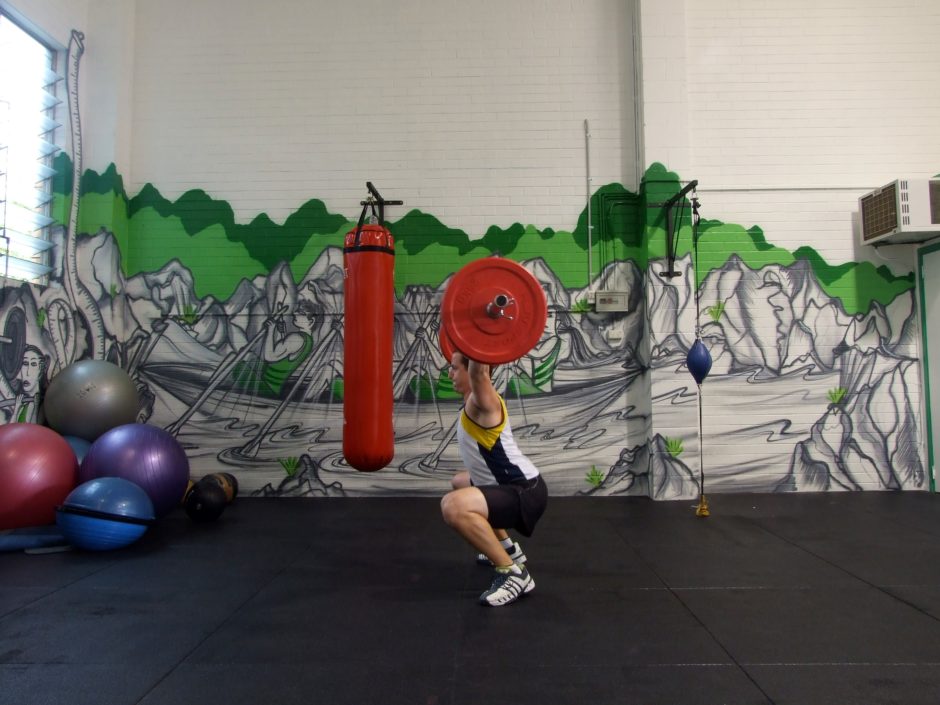Triple Extension and the Importance of Olympic Weightlifting.
Olympic lifting is one of the oldest Olympic sports, and its variations are used by many athletes around the world today. This is due to the specificity of the lifts to sporting movements.
Olympic weightlifting involves two competitive lifts: the snatch; and the clean and jerk. The snatch is lifting the barbell from the ground overhead in one smooth movement; whilst the clean and jerk involves lifting the barbell first to the shoulders and then overhead. There are many variations of these lifts, of which a large number are used as part of the teaching progressions towards the snatch and clean and jerk. The modified lifts, and teaching progressions, are the lifts most commonly used by athletes.
All variations of the snatch, and the clean (the portion of the clean and jerk which ends at the shoulders), involve what is known as triple extension (Figure 1). Triple extension is a posture in which extension of the hip, knee and plantar flexion of the ankle are all achieved, as can be seen in the picture below. Triple extension is a very common posture for athletes. It occurs in running, jumping and a myriad of other athletic activities.

Athletic benefits of Olympic Lifting
Why else is Olympic lifting GOOD? It provides many benefits including power development, flexibility, co-ordination, development of motor skills and body awareness, workout efficiency, and is good for everyone.
It is great for power development, which is essential for most athletes. Power (speed x strength) is the ability to apply force at a rapid rate and relies on the lifter’s rate of force production. This is more important in most sporting situations, than maximum force (strength). When running, an athlete cannot generate maximum strength for each stride; they can only generate a portion of this. The percentage of the maximum force they can apply is related to their rate of force development, and is therefore integral in most sports.
Flexibility is a benefit of Olympic lifting that is often overlooked. Olympic Lifters require a great deal of flexibility to get into the receiving positions of the snatch, and clean and jerk. (Figure 2).

Benefits to every day lifestyle
Flexibility is primarily required at the ankle, hip and shoulder joints. These are the joints that are so often lacking range of motion within the general population, due to the sedentary lifestyles and poor postures reflected in modern society.
Co-ordination is another benefit of Olympic Lifting. It can therefore be a useful method for children to develop motor skills, and body awareness. The Olympic Lifts require almost all the muscles in the human body to work in unison, meaning that the lifter needs to activate all of these muscles and co-ordinate them as a unit. The large number of muscles activated also means that these lifts have great workout efficiency. I.e. they provide a full body workout in not much time. This is perfect in the time poor modern world, however is by the most part, underutilised. There are 3 reasons for this:
- a lack of education as to the benefits of Olympic Lifting;
- a lack of information on Olympic Lifting technique;
- a lack of adequate Olympic Lifting equipment. As strange as it may seem, Arnold Schwarzenegger was an advocate of the Olympic lifts, and often used them to help ‘develop an herculean stature’ and ‘add slabs of muscle’.
Olympic Lifts are also well suited to older adults. Strength, flexibility, and power significantly reduce with age, and there are few better ways than to develop these components of fitness than Olympic Lifts. Reduced power in the leg musculature is highly correlated to falls in the elderly, and is what deteriorates with age more so than muscular endurance. Fall related fractures are a huge problem in modern society. Doctors predict that by 2025, 1 in 3 hospital beds will be taken up by an elderly lady with a hip fracture as a result of a fall. The reason for this is the sedentary nature of society and the resulting decrease in bone density. A fall involving a hip fracture has an average 5 year mortality rate. Olympic Lifting is one of the best ways of promoting bone density. The skeletal loading produced in an Olympic Lift will increase bone mineral density (how thick and strong the bones are) in a child and adult until 30-35 year old when peak bone mass is reached, and in the elderly or skeletally mature will help maintain it (once skeletal maturity is reached, bone mineral density can only be lost or maintained. Loading the bone slows the rate of loss of bone mineral density).
Olympic lifts are also specific to activities of daily living, as well as sports movements. Triple extension is used when climbing stairs and in squatting positions (seen the in the receiving position in Figure 2) such as when getting up from a chair. These two movements are integral in maintaining independence as a person ages. The overhead component of these lifts greatly helps with overhead strength, which helps in daily tasks such as putting groceries on high shelves and cleaning windows. The skeletal loading overhead also means the aforementioned decreased fracture risk is present in the wrist and collar bone (clavicle) which are two other common fracture sites with falls.
In a society where back pain is exceedingly prevalent, and often due to weakness through the ‘core’, lifts such as these which require and develop great strength are a great tool to have in the arsenal of any personal trainer who wishes to aid their clients in remaining pain free, and strong through the core (another often desired trait in the sporting arena).
If you enjoyed this article, you may also be interested in Are Deep Squats Bad For Your Knees?, or The 10,000 Rule Applied to Personal Training.

